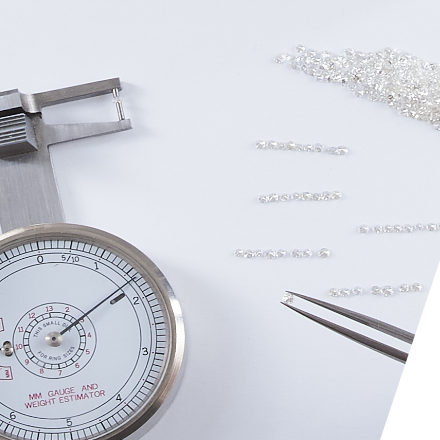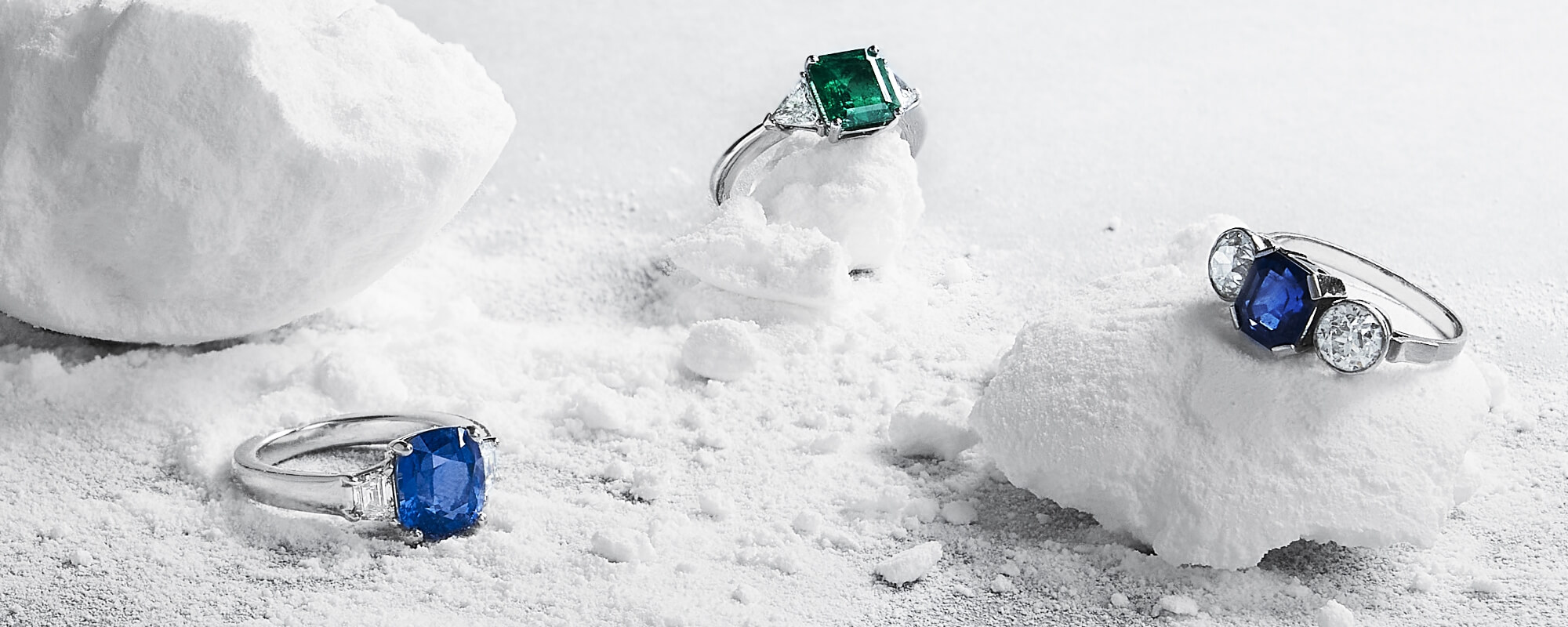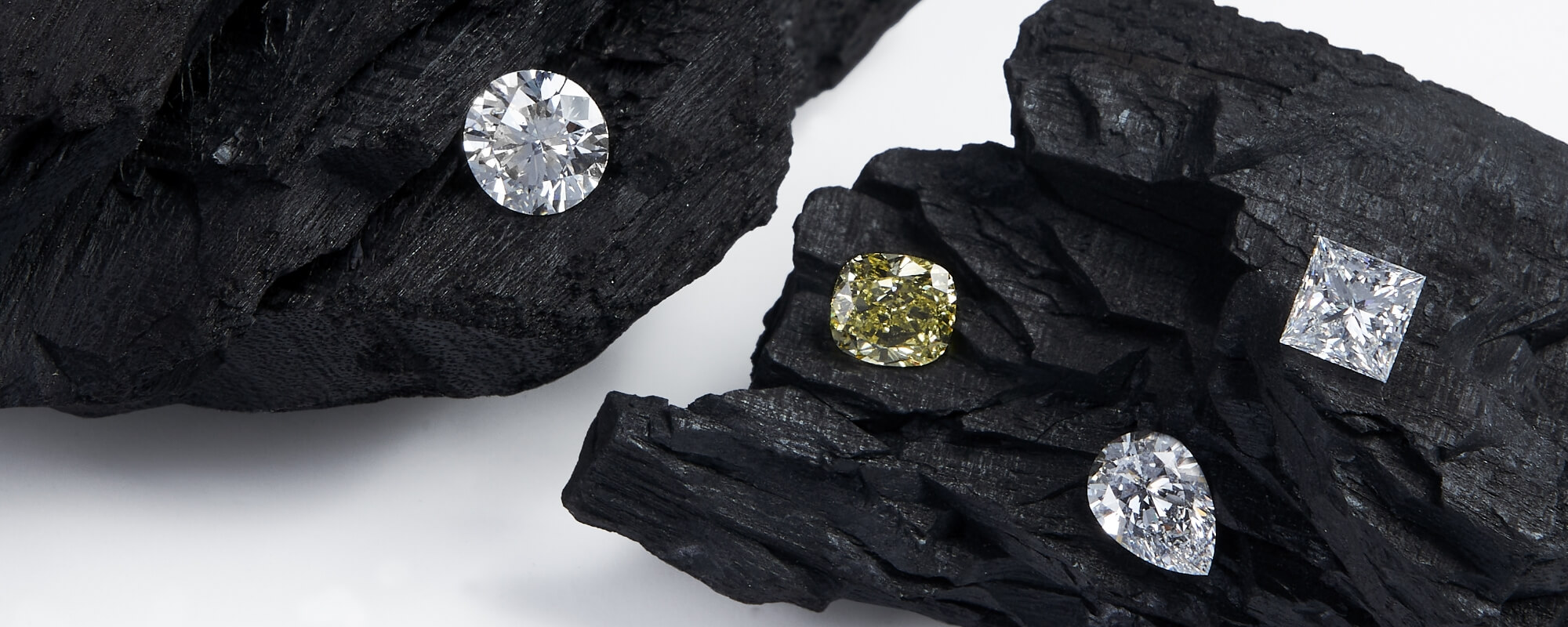The ABC
of Diamonds.
Purity and imperfection make each gemstone unique. Knowing the quality of a diamond allows you to choose the most suited to your specific needs.



How to choose the right gemstone
Each gemstone contains its uniqueness: whether characterized by absolute purity or imperfection that encapsulates its history, it will always become an expression of the emotions of the giver and the receiver. That is why choosing the right gemstone is fundamental. Colombi Diamonds knows how to select the right diamond for every story and relies on a classification that can make you navigate the vast panorama of gems: 4 categories to discover the diamond’s world; 4Cs for a more conscious, informed choice tailored to one's needs.
The classification of the 4 Cs for a more informed and tailored choice.

The color is the most important aspect because it is an aesthetic detail that catches the eye and determines the value of the diamond.
The most wanted color? The absent one. A precious paradox: what’s missing is what is most desired. The most precious gemstones are completely colorless. Nature, however generous, rarely gives any.
There is an international standard (CAPE color scale) to precisely establish a diamond’s color. With its parameters, it is possible to classify the color of diamonds thanks to a range going from D (completely colorless and precious) to Z values (most saturated with yellow).
Fancy diamonds – gems with fine and valued coloring – are excluded from this classification. In these cases, it is not a gemstone imperfection but a natural, unique and rare coloring, therefore extremely precious.

FL, IF
FL (Flawless) or IF (Internally Flawless) classify both diamonds without inclusions, pure at a 10x magnification. These gemstones are very rare and of very high value.

VVS1, VVS2
Very Very Small Included 1 and 2, are gems with minimal inclusions visible only through 10x magnification, with some difficulty. Simply put, they are diamonds with little or no inclusions.

VS1, VS2
Very Small Included 1 and 2, are diamonds with small inclusions visible through 10x magnification. It is the purity level generally most sold in jewelries, because it guarantees a “low” price of the diamond without affecting its brightness.

SI1, SI2
Small Included 1 and 2. In this classification level, the diamond can have bigger inclusions, but is not quite visible to the naked eye. The SI purity allows us to significantly reduce the price of the diamond.

I1, I2, I3
The I diamonds are characterized by imperfections visible to the naked eye, progressively more evident from 1 to 3, and that can affect the reflection of light within the gemstone. They are the lowest-rated diamonds in the classification, intended for people with small budgets who want to achieve an impressive result at the expense of quality.
Faced with the rough material, the diamond cutter has the important task of shaping and transforming an element into light. The cut, in fact, allows the diamond to reach the peak of its beauty and enhance its intrinsic characteristics. The term “light”, in the field of jewelry, conceals several aspects, both technical and magical. A work of art that contributes greatly to giving brightness and fire to the gemstone, but also to giving it the right “emotion”. On the contrary, if badly cut, it won’t be able to reflect light correctly, losing most part of its magic.
The cut is classified gemologically into three categories: proportions, polishing and symmetry.
- Proportions: determines the diamond's brightness and fire.
- Polishing: defines the quality of the facets of external polishing.
- Symmetry: describes the symmetrical perfection of all facets.
Each category is evaluated on four levels: Excellent, Very Good, Good, Fair.
The highest perfection is only achieved by triple Excellent diamonds.
In addition to the classic and best-known round-cut, called “brilliant”, there are other cuts that allow the gemstone to fully show its beauty. All different and charming, created to satisfy the most different tastes and sparkle the eyes of those who see them. Princess, Marquise, Pear, Emerald, Heart shape.
The carat in the world of diamonds carries a certain weight, literally. It is the measuring unit (Ct) by which the weight - and partly the value - of a gemstone is determined. But it doesn’t define its dimension, which is linked to other factors, such as cut and shape. One carat is equivalent to 0.20 grams.
Although the value of the diamond is determined by all the 4 Cs, the carat has still the most “weight”. If we compare two diamonds with the same above-mentioned characteristics, the one with the highest carat will be the most precious.












Follow us on